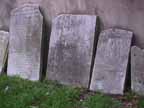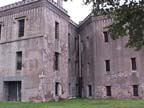Gullah Tour of Charleston
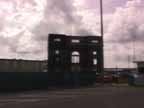 The
Facade of the Bennett's Rice Mill
The
Facade of the Bennett's Rice Mill
This one of the last remaining symbols of Charleston's early dependence on rice culture. Africans from the West Coast brought with them to the Carolinas an understanding of the cultivation of rice which made planters rich. Charleston's port was the entrance point for perhaps three-quarters of the enslaved Africans brought to America.
Located in
the parking lot of Old Bethel Methodist Church, gravestones of Charleston's
early African-American settlers were moved to make way for adjacent houses.
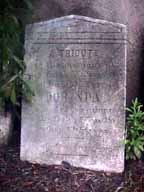 Old
Bethel, built in 1797 - 1798, is the third oldest church building in the city.
Originally both African-Americans and whites attended the Old Bethel, but
in 1880 the building was given to its black members.
Old
Bethel, built in 1797 - 1798, is the third oldest church building in the city.
Originally both African-Americans and whites attended the Old Bethel, but
in 1880 the building was given to its black members.
Slavery denied people fundamental recognition as human beings. As a result,
the headstones of many enslaved people recorded only a single name.
The Denmark Vesey House
Denmark Vesey,
a native of the West Indies,won a raffle which enabled 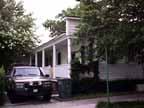 him
to purchase his freedom But freedom alone was not enough for him. In 1822,
he planned a slave rebellion in Charleston. Two blacksmiths made hundreds
of spear heads, pikes, and daggers. However two house servants informed their
owners. Thirty-four were found guilty and publicly hanged. This is believed
to have been Vesey's home, built in 1821.
him
to purchase his freedom But freedom alone was not enough for him. In 1822,
he planned a slave rebellion in Charleston. Two blacksmiths made hundreds
of spear heads, pikes, and daggers. However two house servants informed their
owners. Thirty-four were found guilty and publicly hanged. This is believed
to have been Vesey's home, built in 1821.
Jenkins Orphanage
The old Marine
Hospital served as the second home of th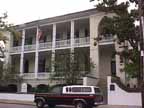 e
Jenkins Orphanage. Founded by Reverend Daniel Jenkins in 1891, the orphanage
was famous for its band which toured the United States and Europe in the early
twentieth century. Many famous musicians began their careers with the Jenkins
Orphanage Band, including jazz greats Jabbo Smith, "Cat" Anderson,
Gus Aitken. Today the building is occupied by the Charleston Housing Authority.
e
Jenkins Orphanage. Founded by Reverend Daniel Jenkins in 1891, the orphanage
was famous for its band which toured the United States and Europe in the early
twentieth century. Many famous musicians began their careers with the Jenkins
Orphanage Band, including jazz greats Jabbo Smith, "Cat" Anderson,
Gus Aitken. Today the building is occupied by the Charleston Housing Authority.
Since 1802
this jail has housed criminals and free African Americans. After the Vesesy
insurrection, 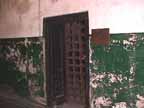 Black
strangers, including seamen, were prohibited from roaming the city and were
temporarily confined here. In 1991, the Spoleto Festival used the jail for
an art exhibition. It is currently under renovating and will eventually be
a school for the vanishing arts.
Black
strangers, including seamen, were prohibited from roaming the city and were
temporarily confined here. In 1991, the Spoleto Festival used the jail for
an art exhibition. It is currently under renovating and will eventually be
a school for the vanishing arts.
The Old Slave Mart
The North side
of the custom house was used to sell slaves until a city ordinance was passed
in 1856, which hid the trade 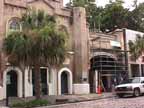 in
humans from view. Traders opened "salesroom" yards, or "marts,"
along Chalmers, Queen, Vendue Range, and State streets. Located on Chalmers,
next to the German Fire Station, the Old Slave Mart is being renovated into
a museum.
in
humans from view. Traders opened "salesroom" yards, or "marts,"
along Chalmers, Queen, Vendue Range, and State streets. Located on Chalmers,
next to the German Fire Station, the Old Slave Mart is being renovated into
a museum.
Many African
Americans trace their roots through slave marts, such as the one located along
Chalmers Street. As many as three-quarters of all African 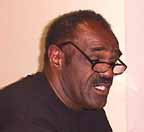 Americans
alive today can trace their lineage through the port of Charleston. Among
them is Milton Profit, a master teacher and colleague of us here at the Kenyon
Great Migration Project.
Americans
alive today can trace their lineage through the port of Charleston. Among
them is Milton Profit, a master teacher and colleague of us here at the Kenyon
Great Migration Project.
